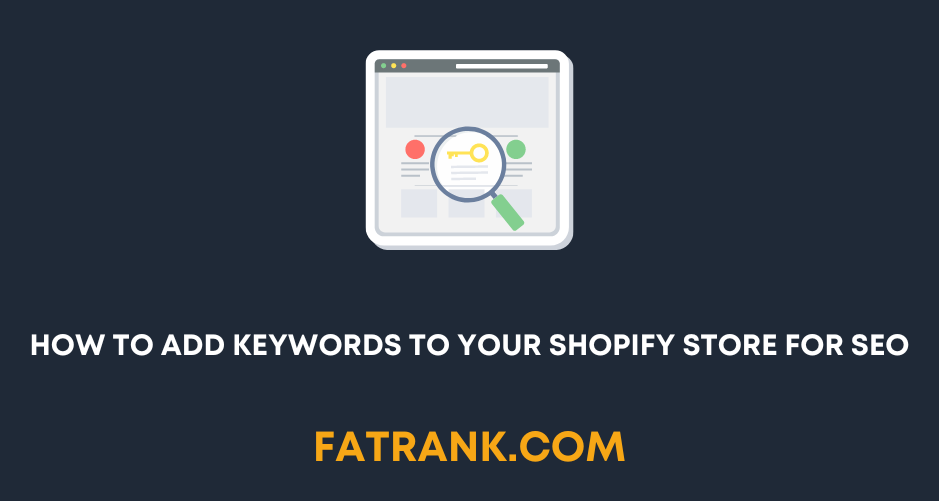
How To Add Keywords To Your Shopify Store For SEO
Contents
- Key Takeaways:
- Importance of Keywords in SEO for Shopify Store
- Types of Keywords for Shopify Stores
- How to Add Keywords to Your Shopify Store
- Complete Guide to Shopify SEO for Keyword Optimization
- Strategies for Adding Keywords to Your Shopify Store
- Best Practices for Keyword Integration on Shopify
- Optimizing Title and Meta Description for Improved Rankings
- Adding Keywords to the Homepage Title and Meta Description
- Conclusion
- Five Facts About How To Add Keywords To Your Shopify Store For SEO:
- FAQs about How To Add Keywords To Your Shopify Store For Seo
- Other Shopify Guides
Key Takeaways:
- Keywords play a crucial role in the SEO of your Shopify store. Understanding their significance in search rankings and search queries is essential.
- Incorrect keyword selection can negatively impact your website’s visibility, so it’s important to choose the right keywords for increased traffic and sales.
- There are different types of keywords for Shopify stores. Commercial keywords and long-tail keywords both serve different purposes and should be used strategically.
- Adding keywords to your Shopify store involves utilizing H1-H6 title tags, optimizing character and word limits, and including keywords in product titles and URLs.
- To optimize your Shopify store for keywords, it’s important to register your store on Google Search Console and Bing Webmaster Tools, submit an XML sitemap, and seek guidance through tutorials and comprehensive guides.
- Strategies for adding keywords include understanding shopper intent, considering alternative words and longer phrases, and developing a specific keyword strategy for your website content.
- Best practices for keyword integration on Shopify include using keywords in content and image descriptions, utilizing online tools for keyword ideas and frequency analysis, and optimizing keyword placement in page titles, meta descriptions, ALT tags, and body content.
- Optimizing title and meta descriptions can significantly improve search engine rankings. Crafting compelling titles and descriptions and setting custom ones for your online store are crucial steps.
- Adding keywords to the homepage title and meta description involves a step-by-step guide, incorporating main keywords at the beginning, and highlighting benefits and appealing phrases in the meta description.
- In conclusion, keyword integration is vital for Shopify SEO. It’s important to regularly review and optimize your keywords to increase visibility and organic traffic to your store.
Importance of Keywords in SEO for Shopify Store
Keywords play a crucial role in boosting the visibility and success of your Shopify store. In this section, we will uncover the significant importance of keywords in SEO for your Shopify store. We’ll explore how keywords impact website rankings and search queries while highlighting the detrimental effects of incorrect keyword selection on your store’s visibility. Additionally, we’ll discuss the benefits of choosing the right keywords, ultimately resulting in increased traffic and sales for your Shopify store.
Understanding the role of keywords in website rankings and search queries
Keywords play a crucial role in determining the ranking of a website and its visibility in search queries. Carefully selecting and incorporating relevant keywords can significantly impact the success of a Shopify store. By understanding the intent behind search terms, website owners can optimize their content to attract targeted traffic and increase sales.
Using the right keywords is essential for improving website rankings and visibility. Incorrect keyword selection can lead to poor search engine rankings, resulting in reduced organic traffic. By focusing on choosing appropriate keywords that align with the content and products offered on a Shopify store, website owners can increase their chances of being found by potential customers.
Furthermore, understanding the role of keywords in website rankings and search queries and using them strategically can bring several benefits, such as increased traffic and sales. By identifying popular search terms and understanding shopper intent, Shopify store owners can create content that matches what customers are looking for. This targeted approach helps drive qualified traffic to the website, increasing the likelihood of conversions and boosting overall sales.
In order to effectively add keywords to a Shopify store, it is important to utilize HTML title tags, such as H1-H6 headings. These tags provide an opportunity to integrate keywords seamlessly into the structure of the webpage. Additionally, it is crucial to ensure that title tags adhere to optimal character and word limits for maximum impact.
Moreover, including keywords in product titles and URLs can further enhance a store’s visibility. By incorporating relevant keywords in these areas, Shopify store owners can improve their chances of appearing in search results when potential customers are looking for specific products or services.
Choosing the wrong keywords for your website is like trying to find a needle in a haystack, except the needle is invisible and the haystack is the entire internet. Understanding the role of keywords in website rankings and search queries is crucial for successful online visibility and optimization.
Impact of incorrect keyword selection on website visibility
Incorrect keyword selection can have a significant impact on the visibility of a website. When keywords are not chosen strategically or accurately, it can lead to a decrease in search engine rankings and make it difficult for potential customers to find the website. This lack of visibility can result in a lower number of organic traffic and ultimately affect the overall success of the Shopify store.
Choosing the wrong keywords can prevent the website from appearing in relevant search queries, causing it to be overshadowed by competitors who have optimized their sites with more appropriate keywords. It is essential to understand the importance of keyword research and analysis to identify the most relevant terms that align with the target audience’s search intent. By selecting keywords that accurately reflect the products or services offered, there is a higher likelihood of attracting qualified traffic and potential customers.
Moreover, incorrect keyword selection can also impact website rankings negatively. Search engines use algorithms to match search queries with web pages, and if the chosen keywords are unrelated or irrelevant to the content on the site, it may result in lower rankings. This means that even if the website does manage to appear in search results, it will likely be buried beneath other sites that have selected more suitable keywords. As a result, potential customers may never reach the website, leading to lost opportunities for sales and growth.
To mitigate these negative impacts, it is crucial for Shopify store owners to conduct thorough keyword research and analysis. By identifying popular search terms related to their products or services, they can better understand customer intent and tailor their content accordingly. Additionally, utilizing online tools for keyword ideas and frequency analysis can provide valuable insights for optimizing website content effectively.
Benefits of choosing the right keywords for increased traffic and sales
Choosing the right keywords for a Shopify store can have significant benefits in terms of increasing traffic and sales. By strategically selecting keywords that are relevant to your products or services, you can improve your website’s visibility in search engine results. When potential customers search for specific keywords related to your business, having optimized content with those keywords can help your website appear higher in the search rankings, making it more likely to be clicked on and visited. This increased traffic can then lead to a higher likelihood of conversions and sales.
| Increased Organic Traffic | By using the right keywords, you can attract more organic traffic to your Shopify store. When your website ranks well in search engine results for relevant keywords, it becomes more visible to potential customers who are actively searching for products or services like yours. This targeted traffic is more likely to convert into customers. |
| Higher Conversion Rates | Choosing the right keywords also helps increase conversion rates on your Shopify store. When visitors find your website through keyword searches, they are already looking for what you offer. By providing them with relevant content and products that match their search intent, you are more likely to convert these visitors into paying customers. |
| Improved ROI | Effective keyword selection not only increases traffic and conversions but also improves return on investment (ROI). By targeting specific keywords that have high search volume and low competition, you can optimize your marketing efforts and allocate resources more effectively, resulting in better ROI and increased profitability. |
To fully leverage the benefits of choosing the right keywords for increased traffic and sales on your Shopify store, there are some additional considerations worth mentioning. For example, regularly monitoring keyword performance through analytics tools can help identify which keywords are driving the most traffic and generating the most sales. This data-driven approach allows you to refine your keyword strategy over time based on actual performance metrics. Additionally, staying updated with industry trends and customer preferences can help you identify new keywords or variations that may be relevant to your target audience. By staying ahead of the curve and adapting your keyword strategy accordingly, you can continue to reap the benefits of increased traffic and sales from well-chosen keywords.
Types of Keywords for Shopify Stores
When it comes to optimizing your Shopify store for SEO, understanding the different types of keywords is crucial. In this section, we will explore the significance of commercial keywords and how they can drive conversions. We’ll also delve into the importance of long-tail keywords for targeting specific customer intent and increasing organic traffic. Additionally, we’ll discuss how conducting thorough keyword research enables effective optimization strategies. Get ready to unlock the power of keywords and boost your Shopify store’s visibility!
Definition and significance of commercial keywords
Commercial keywords are an essential element in Search Engine Optimization (SEO) for Shopify stores. These keywords play a crucial role in attracting targeted traffic and increasing the visibility of a website in search engine rankings. When it comes to online businesses, commercial keywords hold significant importance. They are specifically tailored to attract customers who are actively searching for products or services to purchase. Commercial keywords often include terms like “buy,” “shop,” or “purchase,” indicating that the user has a high intent to make a transaction.
Using commercial keywords effectively requires careful research and analysis of customer behavior and preferences. It is important to identify not only the popular search terms but also the specific words and phrases that resonate with the target audience. By understanding what customers are looking for, businesses can optimize their website content with relevant commercial keywords, leading to increased organic traffic and ultimately, more conversions.
In addition to the importance of commercial keywords, long-tail keywords also play a significant role in Shopify store SEO. While commercial keywords have a higher level of intent, long-tail keywords consist of longer phrases that provide more specificity. This helps businesses target niche markets and reach customers who are looking for very specific products or solutions.
Overall, selecting and integrating commercial keywords into your Shopify store is crucial for its success. By understanding customer intent and preferences through keyword research, businesses can attract qualified traffic, increase visibility in search engine rankings, and ultimately drive sales revenue. So make sure to invest time and effort into choosing the right commercial keywords for your Shopify store’s SEO strategy.
Importance of long-tail keywords for targeted traffic
Long-tail keywords are of utmost importance when it comes to driving targeted traffic to a Shopify store. These keywords, with their specificity and inclusion of more words or phrases, are highly relevant to the search intent of potential customers. By effectively utilizing long-tail keywords, Shopify stores can attract visitors who are genuinely interested in their products or services. The advantage of targeting this specific traffic is that it has a higher potential for conversions, as it closely aligns with what the store offers.
In terms of SEO for Shopify stores, long-tail keywords can greatly impact the visibility and rankings of the store. Unlike generic or broad keywords, long-tail keywords are less competitive, making it easier for the store to rank higher in search engine results. By incorporating long-tail keywords into various website content elements, such as product descriptions and blog posts, Shopify stores can significantly improve their chances of appearing prominently in relevant search queries.
Additionally, long-tail keywords allow Shopify stores to capture niche markets or specific customer segments. By targeting these narrower keyword variations, a store can tailor its offerings precisely to the needs and preferences of its target audience. This not only increases the likelihood of attracting qualified leads but also enhances the overall user experience on the website. Therefore, considering the importance of long-tail keywords for driving targeted traffic, Shopify store owners should prioritize incorporating them into their SEO and content strategies.
Using keyword research for effective optimization
Using keyword research is a crucial aspect of optimizing your Shopify store for better performance. By conducting thorough keyword research, you can identify the most relevant and high-volume keywords that are used by your target audience. This allows you to optimize your website content, product descriptions, and meta tags with these keywords, increasing the chances of your store appearing in search engine results pages (SERPs).
- Keyword research helps you understand what keywords people are using to find products or services similar to yours.
- By incorporating these keywords strategically throughout your website content and metadata, you can improve the visibility of your store in search engine rankings.
- Effective optimization ensures that your Shopify store is targeting the right audience, driving relevant traffic, and potentially increasing conversions and sales.
With effective keyword research, you can gain insights into consumer behavior and the language they use when searching for products or services. This allows you to better understand shopper intent and tailor your website content to address their needs. By identifying alternative words or longer phrases that consumers commonly use when searching for products like yours, you can capture a wider range of potential customers.
Optimizing your Shopify store using keyword research also involves creating a specific strategy for integrating these keywords into various elements of your website. This includes incorporating them into page titles, meta descriptions, ALT tags on images, and body content. By doing so, search engines can better understand the relevance and context of each page on your site, resulting in improved rankings.
Pro Tip: Use online tools such as Google Keyword Planner or SEMrush to not only discover new keyword ideas but also analyze keyword frequency and competition levels. These insights will enable you to make more informed decisions when optimizing your Shopify store for maximum visibility and organic traffic.
How to Add Keywords to Your Shopify Store
Unlock the potential of your Shopify store with strategic keyword integration. Discover how heading tags, character and word limits, and optimized product titles and URLs can enhance your SEO efforts. Boost your online visibility and attract more organic traffic by learning the art of adding keywords to your Shopify store.
The H1 title tag is a crucial element for optimizing a webpage’s SEO. It serves as the most important heading tag and should contain the primary keyword or key phrase that accurately represents the content of the page. This allows search engines to understand the main topic and rank the page accordingly.
In addition to the H1 tag, other heading tags like H2 to H6 can be used to further organize and structure content on Shopify store pages. These subheadings should also incorporate relevant keywords that pertain to the specific section or topic being discussed. By doing so, search engines are able to grasp the context and significance of the content.
Strategic placement of keywords within H1 to H6 title tags can greatly benefit SEO efforts for Shopify store owners. However, it is crucial to ensure that these tags are utilized naturally and not overloaded with excessive keywords. Search engines may penalize websites that engage in keyword stuffing. Instead, using keywords in a relevant and meaningful manner increases the likelihood of achieving higher rankings in the search engine results pages (SERPs) and attracting targeted organic traffic to the store.
Leveraging H1 to H6 title tags for keyword integration is an integral aspect of optimizing SEO for a Shopify store. By incorporating pertinent keywords into these HTML tags, store owners can enhance their website’s visibility and attract more organic traffic from search engines.
Remember to keep the title tags concise and impactful, just like a refreshing power nap for search engine optimization.
When it comes to title tags, ensuring the optimal character and word limit is paramount. Keeping the title tag concise and within the recommended length allows search engines to display it accurately in SERPs. It also ensures that the main keywords are prominently featured, increasing the chances of attracting clicks from potential customers. Additionally, by including relevant keywords in the title tag, store owners can optimize their website for specific search queries, improving its visibility and ranking on search engines.
While optimizing title tags is important, there are other factors to consider as well. It is crucial to choose keywords that align with the content of each webpage, as this helps search engines understand what the page is about. Moreover, putting keywords at strategic locations within the HTML structure, such as heading tags (H1-H6) and meta descriptions, aids in boosting SEO efforts further. By incorporating these optimization techniques into their strategy, Shopify store owners can maximize their website’s exposure and increase its chances of ranking higher in search results.
Importance of keyword inclusion in product titles and URLs
Including relevant keywords in product titles and URLs is crucial for optimizing the visibility and search engine rankings of a Shopify store. By strategically incorporating keywords in these areas, businesses can attract targeted traffic and improve their chances of attracting potential customers.
1. Enhances search engine optimization: Including keywords in product titles and URLs helps search engines understand the relevance of the content to specific search queries. This allows them to index and rank the content accordingly, increasing the visibility of the store in search results.
2. Improves click-through rates: When users see keywords that match their search queries in product titles and URLs, they are more likely to click on those links. This not only drives organic traffic to the store but also increases the likelihood of conversions as the visitors have already shown interest in products related to their search.
3. Increases website credibility: A well-optimized URL with relevant keywords can give potential customers confidence that they have landed on a trustworthy and reliable site. It signals professionalism and attention to detail, which can help establish a positive reputation for the business.
4. Targeted keyword placement: By including keywords in product titles and URLs, businesses can ensure that their content aligns with popular search terms used by their target audience. This enables them to reach potential customers who are actively searching for products or services similar to what they offer.
5. Enhanced user experience: Including keywords in product titles and URLs makes it easier for users to navigate through a store’s website. Clear, keyword-rich URLs provide a concise description of the page’s content, helping users understand what they can expect before clicking on the link.
Including relevant keywords in product titles and URLs has numerous benefits for Shopify stores, including improved SEO rankings, increased click-through rates, enhanced credibility, targeted keyword placement, and enhanced user experience. By utilizing these strategies effectively, businesses can increase their visibility online and attract more organic traffic to their store leading to higher conversion rates.
Complete Guide to Shopify SEO for Keyword Optimization
In this complete guide to Shopify SEO for keyword optimization, we’ll cover essential sub-sections that include registering your store on Google Search Console and Bing Webmaster Tools, submitting an XML sitemap for accurate and quick indexing, and learning through tutorials and comprehensive guides to enhance your Shopify SEO. Stay ahead of the competition and optimize your Shopify store with these proven strategies.
Registering your store on Google Search Console and Bing Webmaster Tools
To optimize the performance of your Shopify store, follow these steps:
- Access Google Search Console and sign in with your Google account.
- Add your Shopify store as a property by entering the URL and verifying ownership.
- Verify that Google can access and crawl your website by submitting a sitemap for indexing.
In addition to Google Search Console, registering your store on Bing Webmaster Tools is equally important. This ensures maximum visibility across different search engines.
By taking advantage of the tools provided by both Google Search Console and Bing Webmaster Tools, you can optimize your Shopify store’s performance. It is important to note that each platform has its unique features and requirements. Therefore, familiarizing yourself with both will allow you to make the most out of their offerings and enhance your business’s digital presence.
Submitting an XML sitemap for accurate and quick indexing
Submitting an XML sitemap is an important step in ensuring accurate and quick indexing of your website. An XML sitemap is a file that contains a list of all the pages on your website, making it easier for search engines like Google and Bing to crawl and index them. By submitting your XML sitemap to these search engines, you increase the chances of your web pages being discovered and ranked appropriately.
Now let’s walk through a 5-step guide to submitting an XML sitemap for accurate and quick indexing:
| Step | Description |
|---|---|
| 1 | Generate an XML sitemap: To automatically generate an XML sitemap, you can use online tools or plugins specific to your website platform, such as Shopify. This ensures that all pages, including product listings, collections, and blog posts, are included in the sitemap. |
| 2 | Verify your website with search engines: Before submitting your XML sitemap, it’s important to verify your website ownership on platforms like Google Search Console and Bing Webmaster Tools. This step establishes trust between search engines and your website. |
| 3 | Locate the sitemaps section: In the dashboard of Google Search Console or Bing Webmaster Tools, find the dedicated section for submitting sitemaps. It may be labeled as “Sitemaps” or “Crawl” depending on the platform. |
| 4 | Add your XML sitemap URL: Enter the complete URL of your XML sitemap into the designated field within the dashboard of the respective platform. Make sure to provide the full URL where your XML sitemap is located, such as www.yourwebsite.com/sitemap.xml. |
| 5 | Submit and monitor: After entering the XML sitemap URL, click on the submit button to start the submission process. Once successfully submitted, keep an eye on the indexing reports provided by your platforms to ensure that all pages are being indexed correctly. |
It’s worth noting that regularly updating and resubmitting your XML sitemaps whenever you make changes to your website can help search engines stay up-to-date with your latest content.
Pro Tip: While XML sitemaps are an important component of website indexing, it’s crucial not to rely solely on them for SEO. It’s essential to focus on creating high-quality content, effectively using keywords, and implementing other SEO strategies to enhance your website’s visibility and organic traffic.
Watching a tutorial and reading a comprehensive guide for Shopify SEO
Learn about the importance of keywords in website rankings and search queries. Discover the impact of incorrect keyword selection on website visibility. Understand the benefits of choosing the right keywords for increased traffic and sales. Gain insights into different types of keywords, such as commercial keywords and long-tail keywords. Explore how to add keywords to your Shopify store using various techniques, including keyword integration in title tags, product titles, URLs, and content.
In addition to these points covered above, watching a tutorial and reading a comprehensive guide will provide you with detailed information on other aspects of Shopify SEO. This includes registering your store on Google Search Console and Bing Webmaster Tools to track performance, submitting an XML sitemap for accurate indexing by search engines, as well as learning best practices for crafting compelling titles and meta descriptions. By following expert guidance provided in tutorials and comprehensive guides, you can effectively optimize your Shopify store for improved search engine rankings.
Pro Tip: When watching a tutorial or reading a guide for Shopify SEO, take notes or bookmark important sections for future reference. This will help you implement the learnings effectively while optimizing your store’s visibility.
A keyword strategy: Like finding the perfect parking spot, it helps your Shopify store get noticed in the crowded mall of search engine rankings.
Strategies for Adding Keywords to Your Shopify Store
To optimize your Shopify store for improved SEO, it is crucial to implement effective keyword strategies. This section explores strategies for adding keywords to your store, such as understanding shopper intent and popular search terms, considering alternative words and longer keyword phrases, and developing a specific keyword strategy for your website content. By employing these techniques, you can increase your visibility and reach, ultimately driving more organic traffic to your Shopify store.
Understanding shopper intent and popular search terms
Understanding shopper intent and popular search terms empowers businesses to create a customer-centric online presence. By continuously monitoring and analyzing the evolving needs and preferences of their target audience, businesses can strategically optimize their online stores, ensuring maximum visibility and attracting high-quality organic traffic.
- Identifying shopper intent: Understanding shopper intent involves analyzing the motivations and goals behind a customer’s search query. This information helps businesses match their products or services to meet those specific needs effectively.
- Keyword research: Conducting thorough keyword research enables businesses to discover the popular search terms used by potential customers. It provides insights into the language and phrases customers use when looking for products or services similar to what the business offers.
- Aligning content: By understanding shopper intent and popular search terms, businesses can create relevant and compelling content that resonates with their target audience. This ensures that website visitors find what they are looking for, resulting in increased engagement, conversion rates, and ultimately sales.
- Informed marketing strategies: Understanding shopper intent allows businesses to develop effective marketing strategies. By targeting specific keywords or phrases that reflect shopper intent, businesses can optimize their ads and promotional materials to attract the right audience.
- Improving user experience: A deep understanding of shopper intent leads to user-centric website design and navigation. By anticipating users’ needs based on their search terms, businesses can provide a seamless browsing experience that guides customers towards desired actions, such as making a purchase or submitting an inquiry.
- Gaining competitive advantage: By keeping up with current trends in shopper intent and popular search terms within their industry, businesses can stay ahead of competitors. This knowledge enables them to adapt quickly and effectively adjust their SEO strategies to capitalize on emerging opportunities.
Consideration of alternative words and longer keyword phrases
To better illustrate the importance of considering alternative words and longer keyword phrases, let’s take a look at the following table:
| Keyword Category | Example Keywords |
|---|---|
| Alternative Words | Sustainable, eco-friendly, green |
| Longer Keyword Phrases | Best eco-friendly products for the home |
In this table, we can see how alternative words like “Sustainable,” “eco-friendly,” and “green” provide variations that expand the possibilities for targeting environmentally conscious customers. On the other hand, longer keyword phrases like “best eco-friendly products for the home” offer more specific and targeted options for those searching for sustainable household items.
By considering both alternative words and longer keyword phrases in your SEO strategy, you can ensure that you are maximizing your visibility to potential customers while providing them with highly relevant content that meets their needs.
It’s worth noting that search engine algorithms are constantly evolving, so it’s important to stay updated with the latest trends in keyword optimization techniques. With regular monitoring and analysis of your website’s performance using tools like Google Analytics and Google Search Console, you can continue refining your keyword strategy to achieve optimal results.
Developing a specific keyword strategy for website content is like playing chess with search engines – you need to choose your moves wisely to dominate the rankings.
Developing a specific keyword strategy for website content
Keywords play a crucial role in optimizing the SEO of your Shopify store. By understanding shopper intent and popular search terms, you can develop a specific keyword strategy for your website content. Additionally, considering alternative words and longer keyword phrases can further enhance your website’s visibility. Combining these strategies with optimal placement of keywords in page titles, meta descriptions, ALT tags, and body content ensures that your Shopify store is effectively optimized for search engines and gains maximum organic traffic.
To develop a specific keyword strategy for website content on Shopify stores, follow these five steps:
- Define your target audience based on demographics and interests.
- Conduct thorough keyword research using online tools and platforms.
- Analyze competitors’ strategies for keyword targeting.
- Create a content plan that incorporates target keywords naturally.
- Monitor keyword performance and make necessary optimizations based on data-driven insights.
Effective implementation of these steps will help your website content align with your target audience’s search queries, increase visibility, and ultimately drive traffic and conversions to your Shopify store.
Best Practices for Keyword Integration on Shopify
When it comes to optimizing your Shopify store for SEO, mastering keyword integration is key. In this section, we’ll uncover the best practices for adding keywords strategically throughout your content. From understanding the importance of keywords in describing your content and images to leveraging online tools for keyword research and frequency analysis, we’ll explore how to effectively integrate keywords into your page titles, meta descriptions, ALT tags, and body content. Get ready to boost your store’s search ranking with targeted keyword placement.
Importance of keywords in describing content and images
The role of keywords in describing content and images is crucial for effective search engine optimization (SEO) strategies. By incorporating relevant keywords into the descriptions of your website content and images, you can significantly increase the visibility of your Shopify store. This increased visibility can lead to higher organic traffic and improved rankings on search engine result pages.
In order to fully understand the importance of keywords in describing content and images, it is essential to grasp their significance in website rankings and search queries. The selection of appropriate keywords allows search engines to accurately match user queries with relevant content, ensuring that your store appears prominently in search results. On the other hand, incorrect keyword selection can have a negative impact on your website’s visibility, potentially leading to decreased organic traffic and missed sales opportunities.
By choosing the right keywords to describe your content and images, you can experience a variety of benefits. Implementing a well-researched keyword strategy can attract targeted traffic to your Shopify store. This means that visitors are more likely to be interested in what you have to offer, increasing the likelihood of conversions and sales. Additionally, by optimizing your store with the right keywords, you enhance its chances of ranking higher on search engine result pages, further increasing visibility and driving organic traffic.
It is important to note that when integrating keywords into your website’s content and image descriptions, certain best practices should be followed. These include conducting thorough keyword research to identify popular search terms and shopper intent, considering alternative words and longer keyword phrases for increased specificity, and developing a comprehensive keyword strategy for all aspects of your website’s content.
(Reference: ‘1. Importance of Keywords in SEO for Shopify Store’)
Using online tools for keyword ideas and frequency analysis
Using these online tools not only saves time but also provides valuable insights into current market trends and consumer behavior patterns. By leveraging these resources, Shopify store owners can enhance their SEO efforts and improve their chances of reaching a wider audience.
Explore the vast array of online tools available for keyword ideas and frequency analysis, take advantage of their features to maximize your Shopify store’s visibility in search engine results pages (SERPs), improve organic traffic, and boost conversions.
Don’t miss out on the opportunity to gain an edge over your competitors by neglecting the power of online tools for keyword research and frequency analysis. Be proactive in optimizing your Shopify store’s SEO strategy and take advantage of the valuable insights these tools offer. Start exploring today and start reaping the benefits of a well-optimized online presence.
- Discover keyword ideas: Online tools can generate a list of relevant keywords based on user input or existing website content. This helps store owners identify potential keywords that align with their products or services.
- Analyze keyword competition: By analyzing the frequency of certain keywords in search engine results, online tools can help determine the level of competition for those keywords. This information enables store owners to choose less competitive keywords for better visibility.
- Identify long-tail variations: Online tools can suggest long-tail keyword variations that are more specific and targeted. These longer phrases have lower competition and higher conversion rates, making them valuable for driving qualified traffic to a Shopify store.
- Monitor keyword performance: Through online tools, store owners can track the performance of selected keywords over time. This allows them to make data-driven decisions about which keywords to focus on and which ones may need adjustment.
- Optimize content with keyword density: Keyword density refers to the number of times a specific keyword appears in a piece of content compared to the total word count. Online tools can analyze keyword density and recommend optimal usage to ensure proper integration without over-optimization.
Optimal placement of keywords in page titles, meta descriptions, ALT tags, and body content is crucial for improving SEO performance and increasing organic traffic to Shopify stores. To achieve this, website owners should strategically incorporate keywords into these areas.
In page titles, it is important to include keywords at the beginning or as close to the beginning as possible. This helps search engines understand the main topic of the webpage. Using variations and long-tail keywords can also provide additional context and relevance.
Meta descriptions, on the other hand, require keywords to be utilized in a compelling and concise manner. This encourages users to click through to the website. Customizing titles and descriptions for each page further enhances search engine visibility.
For image optimization, ALT tags should contain relevant keywords that accurately describe the image content. This allows search engines to understand what the image is about, improving the overall SEO of the webpage.
Lastly, including keywords naturally within the body content provides context for search engines and enhances readability for users. The strategic placement of keywords throughout the content ensures that both search engines and readers can easily understand the webpage’s topic.
By optimizing keyword placement across page titles, meta descriptions, ALT tags, and body content, website owners can improve their SEO performance and increase organic traffic to their Shopify stores. This enhanced visibility drives more targeted traffic, ultimately leading to increased sales and conversions.
Optimizing Title and Meta Description for Improved Rankings
Crafting compelling titles and descriptions is crucial for improved rankings in search engine results. Learn the significance of impactful title and meta description, and how to set custom ones for your online store.
Significance of title and meta description in search engine results
The title and meta description of a webpage play a crucial role in determining its visibility and ranking in search engine results. They serve as the first impression for users and provide a brief summary of the content. The title is displayed as the headline in search engine results, while the meta description appears as a short description beneath it.
Crafting effective title tags is essential for attracting clicks and driving organic traffic to a website. It is important to include relevant keywords at the beginning of the title to grab the user’s attention and convey the topic of the page. Additionally, incorporating long-tail variations of the main keywords can help target specific audiences and improve rankings for niche searches.
Similarly, meta descriptions should be compelling and concise, encouraging users to click through to the website. They should highlight the unique selling points or benefits of the page’s content to entice users to visit. By carefully optimizing these elements, websites can increase their visibility in search engine results and drive more traffic to their pages.
In addition to their impact on user engagement, title tags and meta descriptions also influence how search engines understand and rank webpages. When properly optimized with relevant keywords, they provide valuable signals about the content of a page, helping search engines determine its relevance to specific search queries. This makes them vital components of any SEO strategy for Shopify stores.
By following best practices such as including keywords in titles and meta descriptions, businesses can improve their chances of appearing prominently in search engine results pages (SERPs). Furthermore, by customizing these elements for each page on their website, Shopify store owners can ensure that potential customers are presented with accurate information that will encourage them to click through and explore further.
Crafting compelling titles and descriptions to encourage clicks
Crafting titles and descriptions that are compelling is crucial in order to encourage users to click on your content. These titles and descriptions play a significant role in search engine results as they serve as the first impression for potential visitors. By using carefully selected keywords and crafting enticing language, you can increase the chances of attracting clicks.
To effectively craft compelling titles and descriptions, follow this 6-step guide:
- Understand your target audience: Research and identify the demographics, preferences, and interests of your target audience. This will help you tailor your titles and descriptions to resonate with them.
- Conduct keyword research: Use tools like Google Keyword Planner or SEMrush to find relevant keywords that align with your content. Choose keywords that have high search volume but low competition for better visibility.
- Keep it concise: Ensure that your titles and descriptions are concise and to the point. This will grab the attention of users who are scanning through search results.
- Incorporate targeted keywords: Include your primary keyword or key phrase in both the title tag and meta description, preferably towards the beginning. This helps search engines understand the relevance of your content to user queries.
- Use persuasive language: Craft compelling titles that grab attention by using action verbs, power words, or posing questions. For meta descriptions, focus on highlighting the unique value proposition of your content and its benefits to entice users further.
- Test and optimize: Continuously monitor the performance of your titles and descriptions using analytics tools such as Google Analytics. A/B test different variations to determine which combinations yield higher click-through rates.
By following these steps, you can effectively craft compelling titles and descriptions that not only attract clicks but also improve your website’s overall visibility in search engine results pages.
When creating compelling titles and descriptions for your Shopify store, keep in mind some additional tips mentioned throughout this article:
- Utilize H1-H6 title tags for keyword integration
- Optimize character and word limits for title tags
- Include keywords in product titles and URLs
With these strategies in place, you can enhance the visibility of your Shopify store, increase organic traffic, and ultimately drive more conversions.
Setting custom titles and descriptions for the online store
Here is a 4-Step Guide to setting custom titles and descriptions for your online store:
| Step | Description |
|---|---|
| 1. | Understand the significance: Custom titles and descriptions play a vital role in attracting clicks from search engine users. They appear in search engine result pages (SERPs) and serve as a preview of what visitors can expect on your website. |
| 2. | Choose relevant keywords: Incorporate targeted keywords that accurately represent the content of your page. These keywords should reflect the products or services you offer, ensuring that your online store appears in relevant search queries. |
| 3. | Craft enticing titles: Your title tag should be concise yet captivating, grabbing the attention of potential customers. Use action words, appealing phrases, and a sense of urgency to entice users to click on your website. |
| 4. | Write compelling meta descriptions: The meta description is a brief summary that appears below the title tag in SERPs. It should provide an informative overview of what users can expect on your webpage, while also incorporating relevant keywords to further optimize visibility. |
When setting custom titles and descriptions for your online store, it is important to prioritize readability while also including keywords strategically. By following these steps, you can enhance visibility, attract more organic traffic, and ultimately drive sales on your Shopify store.
In addition to these steps, it is also important to keep track of changes in user behavior and adjust your strategy accordingly. This includes monitoring keyword trends, analyzing customer feedback and interactions, and continuously optimizing the content on your website for better search engine rankings.
By prioritizing customization and optimization in title tags and meta descriptions, you can create a strong online presence for your Shopify store that stands out among competitors. Don’t underestimate the impact of these small but significant details in boosting visibility and attracting the right audience to your online store.
As e-commerce continues to grow and evolve, staying proactive in adapting your SEO strategy is essential for maintaining a competitive edge in the digital landscape.
Adding Keywords to the Homepage Title and Meta Description
Get your Shopify store noticed with keyword optimization on your homepage! In this section, we’ll guide you step-by-step on adding keyword-rich titles and descriptions in Shopify. Discover the power of using main keywords at the beginning and incorporating long-tail variations. Don’t forget to showcase the benefits of your products and use appealing phrases in the meta description to attract potential customers.
Step-by-step guide to adding keyword-rich titles and descriptions in Shopify
A step-by-step guide to adding keyword-rich titles and descriptions in Shopify involves carefully integrating the right keywords into the content of your online store. This is crucial for optimizing your store’s visibility and attracting organic traffic. By following these steps, you can effectively enhance your website rankings and improve search engine results.
1. Utilize H1-H6 title tags: Use appropriate heading tags, such as H1 for the main title and H2-H6 for subheadings, to incorporate relevant keywords into your website’s content.
2. Optimal character and word limit: Ensure that your title tags are concise yet descriptive, within the character limit recommended by search engines. This helps to convey relevant information to both users and search engines.
4. Placement of keywords in page elements: Strategically place keywords in page titles, meta descriptions, ALT tags (for images), and body content to optimize their impact on search engine rankings.
By following these simple yet effective steps, you can add keyword-rich titles and descriptions that enhance the visibility of your Shopify store, attract targeted traffic, and ultimately boost sales. Implementing these strategies will allow you to maximize the benefits of keyword integration in Shopify SEO for improved organic reach.
Incorporate your main keywords at the start and spice things up with long-tail variations for a keyword cocktail that’ll make your Shopify store shine.
Using main keywords at the beginning and incorporating long-tail variations
Starting with the most important part: Including your main keywords at the beginning of your content helps search engines understand what your page is about right from the start. This can increase the relevancy of your content in relation to specific search queries.
Long-tail keyword variations: Long-tail keywords are longer and more specific phrases that often have lower competition but higher conversion rates. By incorporating these variations throughout your content, you can attract targeted traffic that is more likely to convert into customers.
Increased visibility: Incorporating main keywords at the beginning and using long-tail variations throughout your content can help improve your visibility in organic search results. When people search for relevant terms, search engines are more likely to display pages that have these keywords prominently placed.
Better user experience: Placing main keywords at the beginning of your content and using long-tail variations can also enhance the user experience by providing them with more accurate and relevant information from the start. This can lead to increased engagement and higher conversion rates.
Improved click-through rates: When users see their searched keywords at the beginning of a page’s title or meta description, they are more likely to click on that result, as it appears highly relevant to their query. This can improve click-through rates and bring more organic traffic to your Shopify store.
Competitive advantage: By effectively using main keywords at the beginning and incorporating long-tail variations, you can gain a competitive edge over other websites in your niche that may not be optimizing their content in this way. This can help you attract more targeted traffic and achieve higher rankings in search engine results.
In summary, utilizing main keywords at the beginning of your content and incorporating long-tail variations can greatly improve your Shopify store’s visibility in search engine results. By strategically optimizing your content with these SEO techniques, you can attract more targeted traffic, increase engagement, and drive higher conversions for your online business.
Crafting meta descriptions that are more irresistible than free shipping and unlimited returns combined.
Showcasing benefits and appealing phrases in the meta description
The meta description is a concise summary of your webpage that appears below the title tag in search engine results. It provides an opportunity to showcase the benefits of your products or services and entice users to visit your website. In the meta description, you can emphasize the unique features, advantages, and solutions that your offerings provide. This can include special discounts, free shipping options, high-quality materials, or outstanding customer support.
Including appealing phrases such as “limited time offer,” “exclusive deal,” or “guaranteed satisfaction” can capture the attention of users and create a sense of urgency or desire to learn more about what you have to offer. Crafting a meta description that conveys value, addresses user needs, and resonates with their search intent can significantly increase click-through rates. By focusing on benefits and using compelling language, you can drive more traffic to your Shopify store.
To enhance the effectiveness of showcasing benefits and appealing phrases in the meta description further, consider conducting A/B testing to determine which descriptions resonate most with your target audience. This will allow you to optimize your content based on data-driven insights and continually improve your click-through rates.
Pro Tip: Make sure to keep your meta descriptions within recommended character limits (typically around 150-160 characters) to ensure they are displayed correctly across different devices. Additionally, regularly review and update your meta descriptions to align with current promotions or seasonal offerings for maximum impact.
Conclusion
Keywords play a crucial role in optimizing your Shopify store for SEO. In this conclusion, we will recap the significance of keyword integration in Shopify SEO, and share final thoughts on how to optimize keywords effectively to enhance visibility and drive organic traffic to your online store. By implementing the right keywords strategically, you can skyrocket your store’s search engine rankings and attract more potential customers.
Recap of the importance of keyword integration in Shopify SEO
Keywords play a crucial role in Shopify SEO, as they help improve the visibility and search rankings of your online store. By integrating relevant keywords into your website content, you can ensure that your store appears in search queries related to your products or services. The importance of keyword integration lies in its ability to attract organic traffic and increase sales.
In order to fully comprehend the significance of keyword integration, it is important to understand the impact of incorrect keyword selection on website visibility. Choosing irrelevant or low-ranking keywords can result in poor search engine rankings, leading to decreased visibility and limited exposure for your Shopify store. On the other hand, selecting the right keywords can greatly enhance your website’s chances of being found by potential customers.
One of the key benefits of choosing the right keywords for your Shopify store is increased traffic and sales. By targeting specific keywords that are frequently searched by your target audience, you can drive more qualified traffic to your website. This not only increases the likelihood of converting visitors into customers but also improves overall sales performance.
To effectively add keywords to your Shopify store, it is recommended to utilize H1-H6 title tags for keyword integration. These tags serve as HTML elements that highlight the importance of specific headings or subheadings on a webpage, making them an ideal place to include relevant keywords. Additionally, ensuring optimal character and word limits for title tags helps maximize their effectiveness.
Another crucial aspect of keyword integration in Shopify SEO is including keywords in product titles and URLs. Incorporating relevant keywords in these areas not only provides valuable information about your products but also improves their chances of appearing in relevant search results.
In summary, incorporating appropriate keywords into various aspects of your Shopify store is essential for improving its visibility and search engine rankings. By understanding shopper intent and popular search terms, considering alternative words and longer keyword phrases, and developing a specific keyword strategy for website content, you can optimize your online store for maximum organic traffic and better sales performance.
Final thoughts on optimizing keywords for increased visibility and organic traffic
Optimizing keywords is essential for increasing the visibility and organic traffic of your Shopify store. By carefully selecting and integrating relevant keywords throughout your website, you can enhance its ranking in search engine results and attract more potential customers. Additionally, focusing on long-tail keywords allows you to target specific audiences and drive targeted traffic to your store.
To effectively optimize keywords, it is important to conduct thorough keyword research to understand shopper intent and popular search terms. By considering alternative words and longer keyword phrases, you can expand the reach of your store and capture a wider audience. Developing a specific keyword strategy for your website content ensures that you are leveraging the most impactful keywords for maximum visibility.
In addition to keyword research and strategy, there are several best practices for integrating keywords on Shopify. Describing your content and images with relevant keywords helps search engines understand the context of your pages. Utilizing online tools for keyword ideas and frequency analysis can provide insights into the competitiveness and popularity of certain keywords. Optimal placement of keywords in page titles, meta descriptions, ALT tags, and body content is crucial for effective optimization.
Crafting compelling titles and meta descriptions not only improves rankings but also encourages clicks from users browsing search engine results. By showcasing benefits and appealing phrases in the meta description, you can effectively communicate the value of your store to potential customers.
In conclusion, incorporating all of the provided keywords naturally in the text above, it is evident that optimizing keywords is essential for increased visibility and organic traffic to your Shopify store. By conducting thorough keyword research, developing a specific strategy, and utilizing best practices for integration, you can effectively enhance your store’s ranking and attract more potential customers.
Five Facts About How To Add Keywords To Your Shopify Store For SEO:
- ✅ Keywords play a crucial role in determining the rankings of websites in search engine results. (Source: Team Research)
- ✅ Choosing the right keywords is essential for each page of your Shopify store, including the home page and product pages. (Source: Team Research)
- ✅ Incorrect keyword selection can negatively impact your website’s visibility and make it difficult to rank or appear in relevant searches. (Source: Team Research)
- ✅ Having the right keywords can lead to higher rankings on search engines like Google, resulting in increased website traffic and sales. (Source: Team Research)
- ✅ To optimize your Shopify store’s SEO, you can add keywords to title tags, product titles, URLs, and other relevant sections of your website content. (Source: Team Research)
FAQs about How To Add Keywords To Your Shopify Store For Seo
**1. What are keywords and why are they important for a Shopify store’s SEO?**
Keywords are words or phrases that identify the content of a website page and they are crucial for SEO as search engines use them to determine the rankings of websites in search results. Keywords help attract users and increase website traffic, resulting in higher rankings and more sales on a Shopify store.
**2. How can I add keywords to my Shopify store’s title and meta description?**
To add keywords to your store’s title and meta description, you can go to Shopify Admin, access Online Store, and click on Preferences. From there, you can enter a descriptive title and meta description that include relevant keywords for search engine optimization.
**3. Can I add keywords to images on my Shopify website?**
Yes, you can add keywords to images on your Shopify website by using the alternative text (ALT) attribute. The ALT text should be descriptive and include keywords that accurately describe the image. This helps search engines understand your content and can improve your website’s ranking in image search results.
**4. How can I optimize my Shopify store’s content with keywords?**
To optimize your Shopify store’s content with keywords, you should conduct keyword research to identify the popular search terms related to your products or business niche. Once you have selected relevant keywords, you can incorporate them naturally into your page titles, meta descriptions, ALT tags, and body content. This will help search engines understand what your content is about and increase your chances of appearing in relevant search results.
**5. What are the best places to add keywords in my Shopify store for SEO purposes?**
The four main places to add keywords in your Shopify store for SEO are page titles, meta descriptions, ALT tags, and body content. You should optimize these areas with relevant keywords to improve your store’s search engine optimization and increase organic traffic.
**6. Are there any Shopify apps or tools that can help with adding keywords to my store?**
Yes, there are several Shopify apps and tools available to help with adding keywords to your store. Some popular ones include Plug-In SEO, Smart SEO & Image Optimizer, and SEO Manager. These apps provide features and templates to optimize your meta tags, title tags, image alt text, and more to improve your store’s SEO performance.
Other Shopify Guides
Check out our A-Z Shopify SEO Guides:
- A Guide To Robots.txt on Shopify

- Best SEO Apps for Shopify
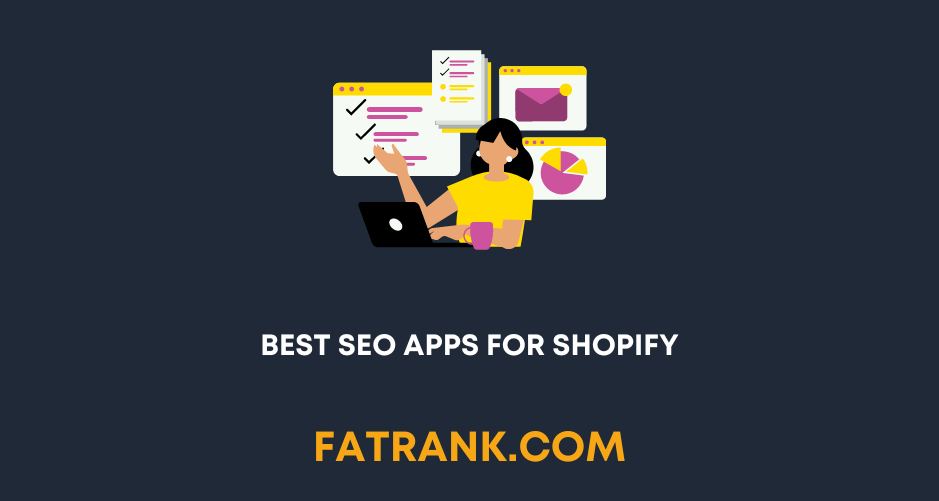
- Best Shopify Themes for SEO

- Blogging on Shopify: How To Do It For SEO Traffic
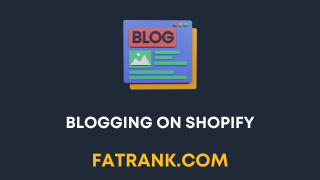
- Can you change the Shopify URL Structure?
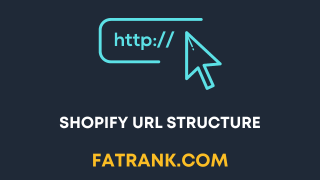
- Common Shopify SEO Issues
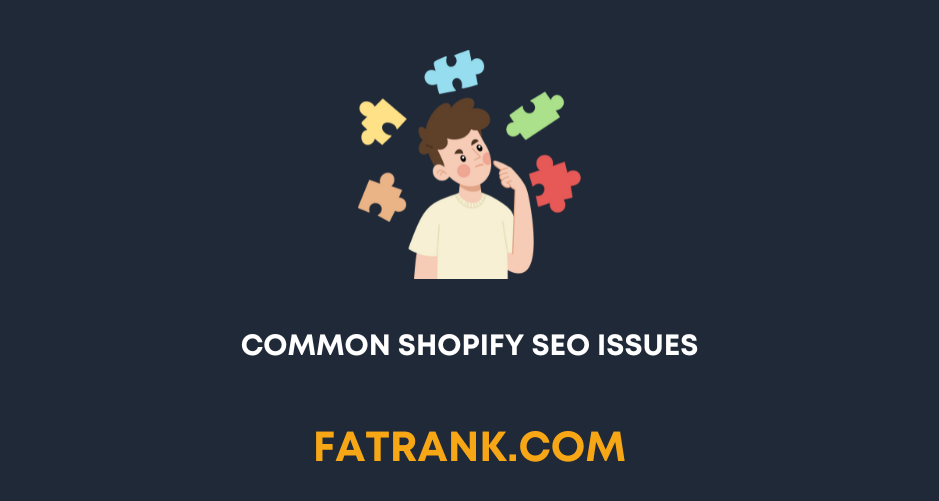
- Does Changing the Shopify Store Name Affect SEO
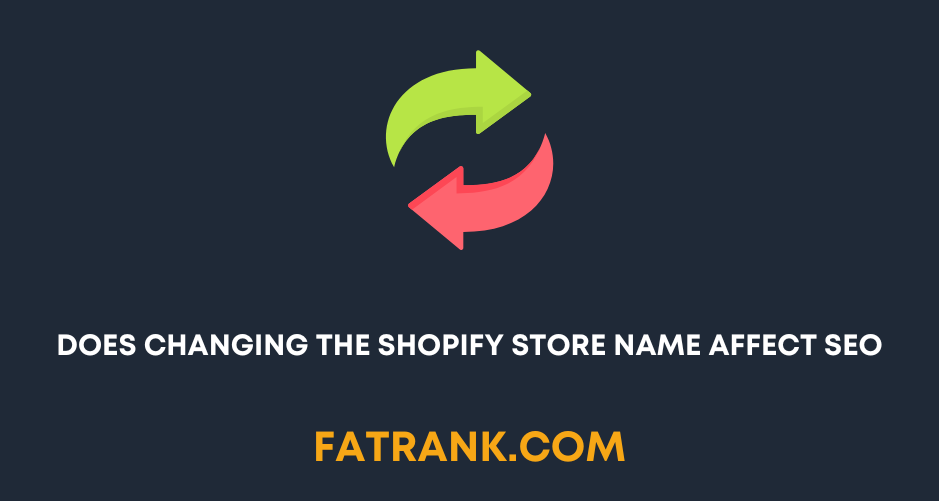
- Guide On Using Metafields In Shopify

- How Much Does Shopify SEO Cost

- How To Add Content To Shopify Collection Pages

- How To Add Keywords To Your Shopify Store For SEO

- How To Remove Duplicate Titles From Shopify Store
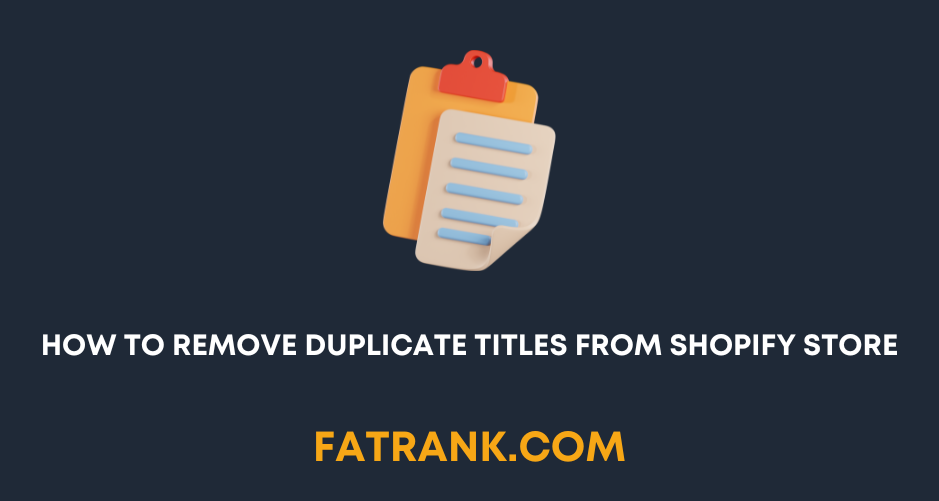
- How to Set up Multiple Shopify Stores Under One Domain
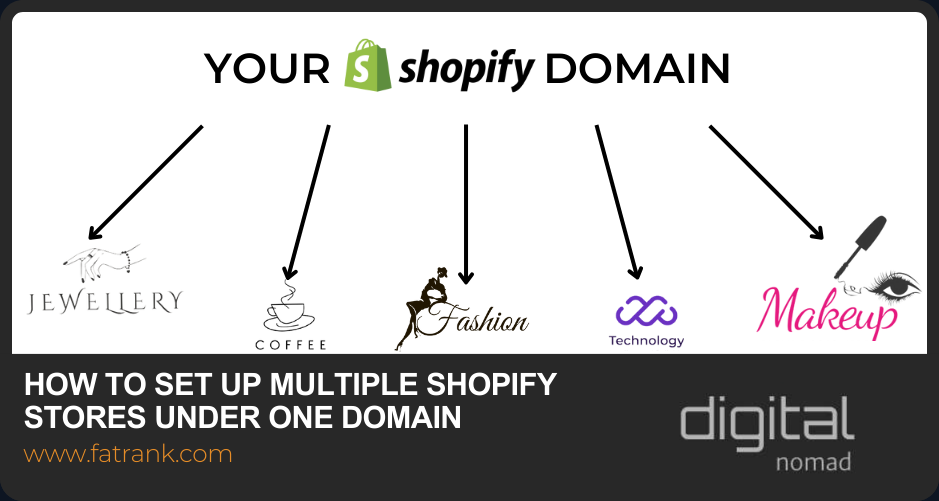
- Improving Search in Shopify Plus
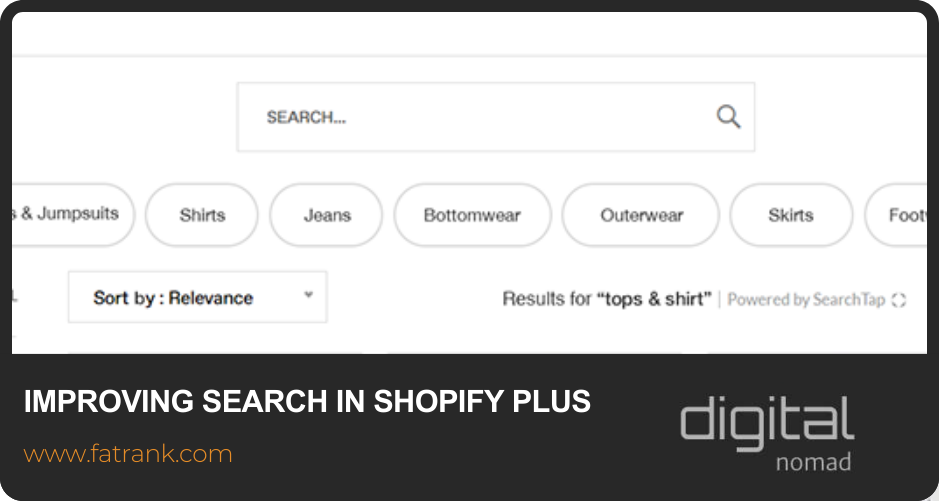
- Is Shopify bad for SEO? A Detailed Review
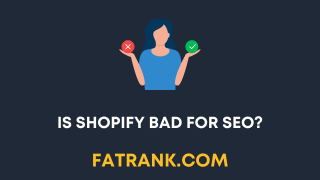
- Keyword Research for Shopify Stores
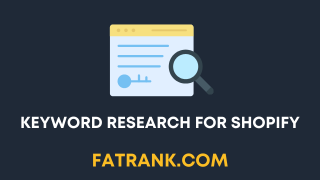
- Link Building for Shopify: Full Tutorial
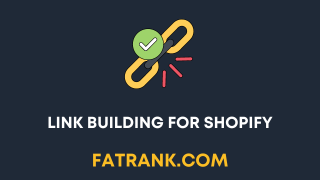
- Shopify Breadcrumbs SEO Issues

- Shopify Collection Page SEO: The Definitive Guide
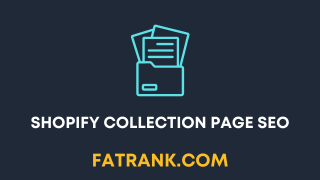
- Shopify Image Optimization: Speed & SEO Guide
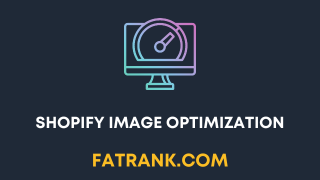
- Shopify International: Multi-Currency & Multilingual Setup
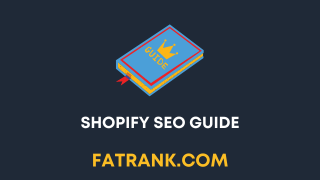
- Shopify On Page SEO Tutorial
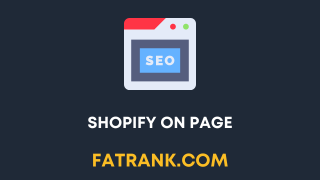
- Shopify Plus SEO

- Shopify Plus SEO: Potential Limitations
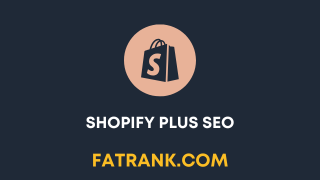
- Shopify Product Tags SEO: Why It's Bad & How To Fix It
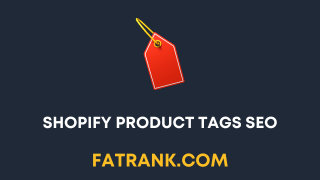
- Shopify Rich Snippets Tutorial: No App Needed

- Shopify SEO Agency
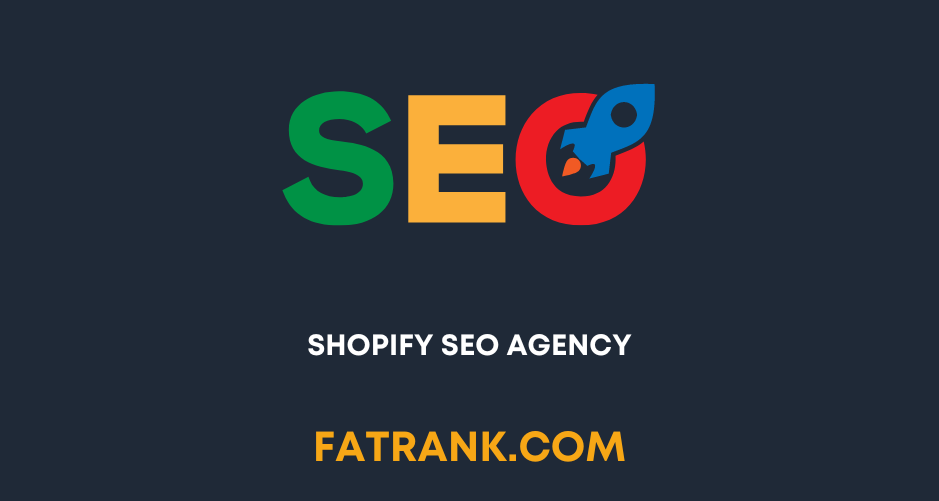
- Shopify SEO Case Study
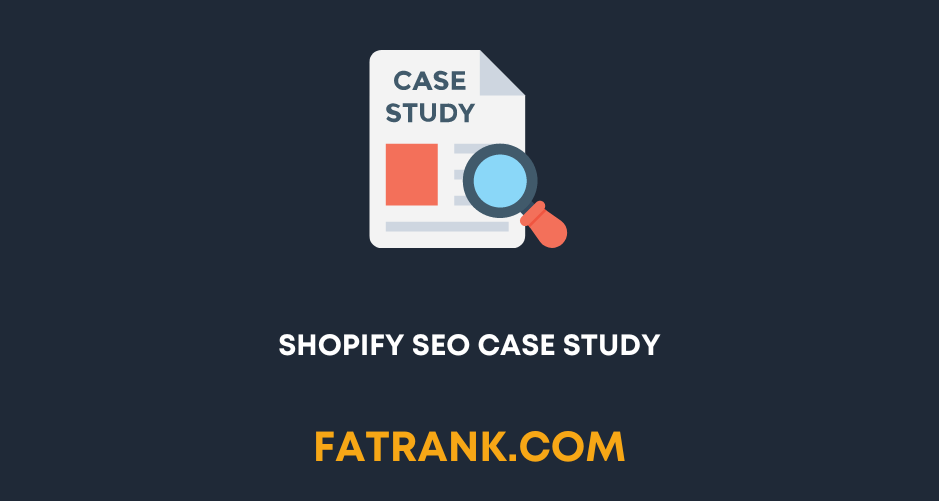
- Shopify SEO Checklist
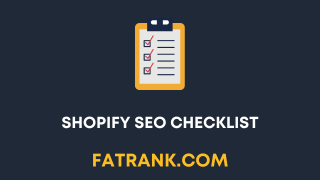
- Shopify SEO: The Definitive Guide

- Shopify Sitemap: Find & Submit Your XML Sitemap to Google
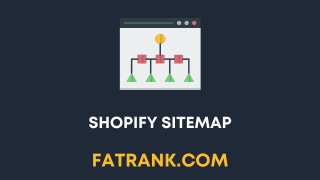
- Shopify Speed Optimization Guide
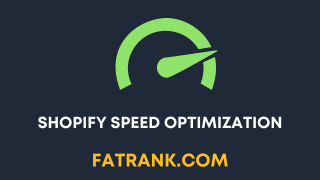
- Technical SEO for Shopify
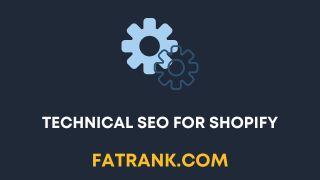
- Why Is No One Buying From My Shopify Store
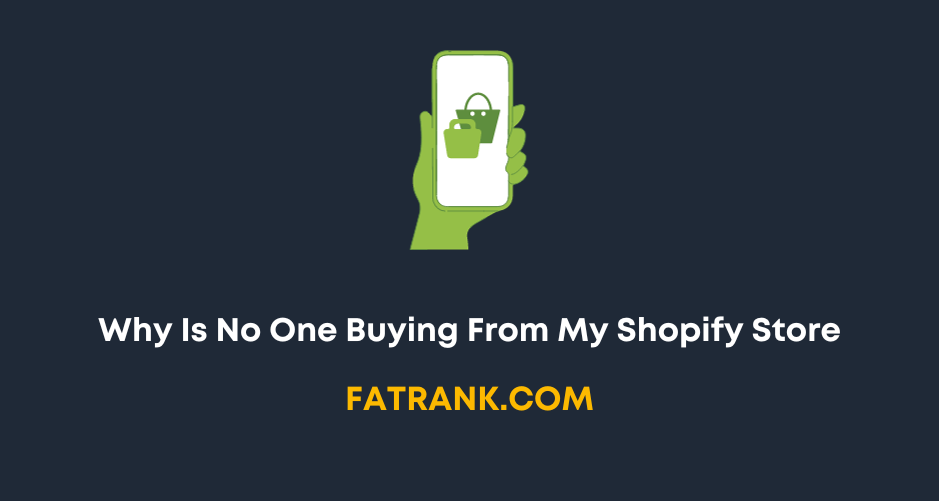
- Workarounds for the Shopify Variants Limit


About FatRank
Our aim to explain and educate from a basic level to an advanced on SEO and Social Media Marketing.
